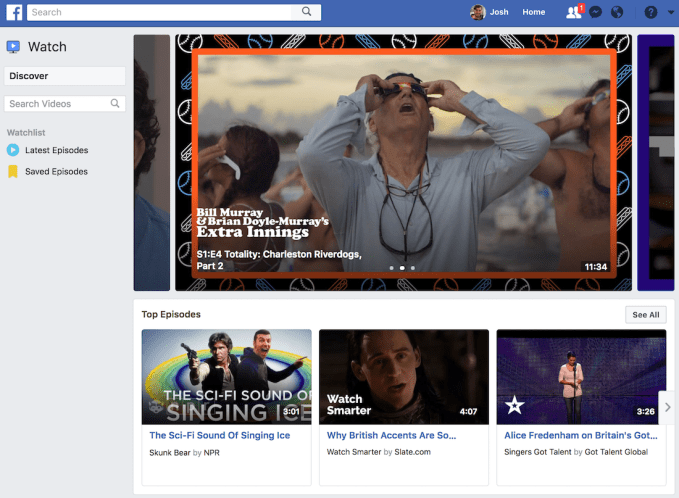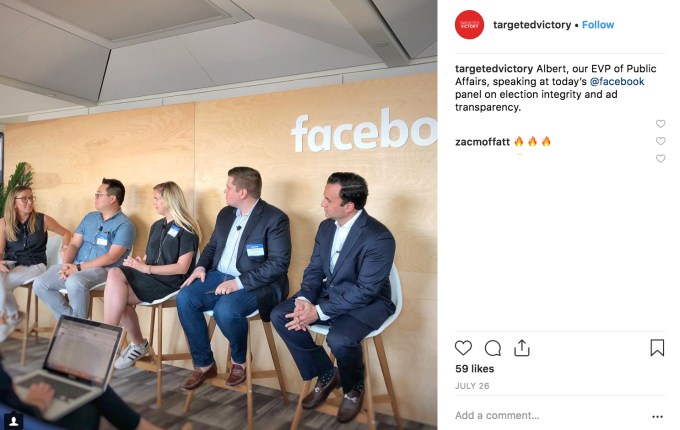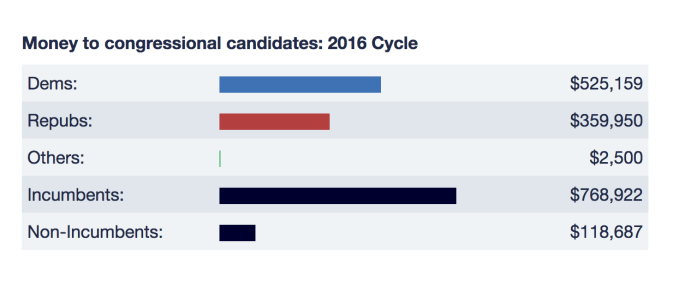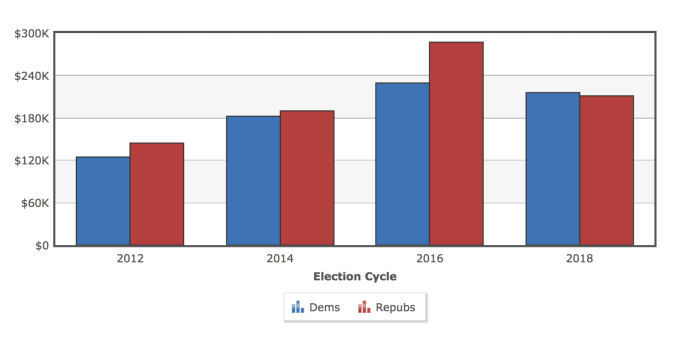Best Online TV Streaming Services: Welcome to your definitive guide to the best, most worthwhile streaming services you should subscribe to after you've decided to cut the cord.
The cord cutting movement has grown and grown in recent years and no one is surprised. There are many reasons for that, from shifting behaviors to online streaming, sky-rocketing cable bills full of features and channels no one watches and, of course, a huge selection of truly fantastic TV and movies on many streaming services online.
Not only are there dozens of streaming services on the market, each of which offering a cornucopia of content that we can stream any time, anywhere, there are plenty new ones on the way.
For example, right now you've got your cable alternative mainstays like Netflix and Amazon, plus HBO Now for your Game of Thrones fix, and if you're still interested in live TV without the bill at the end of the month, services like YouTube TV, Hulu and Sling TV are happy to fill in the gaps.
What's more, Disney is set to shake up the online streaming scene soon with Disney+. The new subscription service will be owned and operated by Disney and is set to land some time during 2019.
If that just sounds more confusing and the last thing you need is another streaming service to add to your monthly outgoings, then remember that Disney+ is likely to house most of the Marvel and Star Wars content. Which means for a lot of us it's a no-brainer.
We know what you're thinking. All this choice is great. Almost too great. If you were to subscribe to everything, you'd wind up paying more than you did for cable. So, with that in mind we've set out to find the best online TV streaming services, a definitive list of the services you absolutely need to subscribe to right now, plus a few more that are well worth your consideration.
Are you ready to kill off cable and step into the world of streaming? Pick your poison from the list of services below and don't forget to budget for Disney+ when it arrives next year.
1. Netflix
If you're a connoisseur of movies and/or TV, there's only one must-have player in town and that's Netflix. It is, unequivocally, the biggest and best streaming service, despite not always stocking its digital shelves with must-have new movies and TV; that said, this is the staple streamer you need to own if you ever plan on cutting the cord and surviving without it.
These days, most smart TVs have Netflix apps and finding a streaming box without it is the equivalent of finding a needle in a haystack. The quality of the movies and TV we tried – mostly streamed in Ultra HD – on both TV and on tablets is exquisite.

Since launching its own content in 2013, Netflix's originals library has swelled to an enormous size, boasting dozens of award-winning shows including Stranger Things, Orange is the New Black, The Crown, Master of None, House of Cards and a bunch of Marvel shows like Luke Cage, Daredevil and Jessica Jones.
Netflix runs on a PC and Mac, Apple TV, Xbox One, PS4, Amazon Fire TV (and Amazon Fire TV Stick), Android phones and tablets, Windows Phones, iOS devices, internet-enabled TVs and Blu-ray players, and streaming players from Philips, Roku and Western Digital.
Don't forget you can also give Netflix a spin with the 1-month free trial to see if it's worth your money.
Verdict: 5/5
2. Amazon Prime Instant Video
Amazon and Netflix, they're two sides of the same coin. Usually where there's one, there's the other, and saying one is better than the other is kind of like saying jelly is better than jam.
That's not to say they're identical - they most certainly are not - but the differences are few and far between.
First off, in terms of availability, Prime Instant Video is available for PC and Mac, the Kindle Fire HD, iPad, Xbox One, PS4, internet-enabled TVs and Blu-ray players, Sony's Home Cinema system, Sony's Network Media Player and myriad other minor devices that will go unmentioned.
Like Netflix, Amazon has its own set of original series - Transparent, Alpha House and Mozart in the Jungle among others - but, generally speaking, they don't receive the same fanfare as their Netflix-bred brethren.
But although Netflix isn't just full of must-watch shows, it's worth mentioning Amazon Prime does get some pretty terrible new additions from time to time. So always check out our what to watch recommendations before you dive in head first.

The two big differentiators between the services are the fact that access to Prime Instant Video comes standard with a subscription to Amazon Prime, and Amazon has its own proprietary set-top box, the Amazon Fire TV.
The £69/$69 (around AU$90) streamers aren't the only connected devices with access to Amazon obviously, but engulfing yourself into the Amazon ecosphere greatly improves your chances of falling in love with Instant Video.
As far as its cost, a subscription to Amazon Prime will run you $99/£99 a year - which is even less than Netflix, though like Netflix, Prime Instant Video also offers a 30-day free trial so you don't have to pony up any money when you first start.
Verdict: 5/5
3. Hulu and Hulu Plus
If you would've told us back in the '90s that a video streaming service called "Hulu" would be the best way to watch shows like The Simpsons, Saturday Night Live and South Park in the 21st century, we would've thought Y2K succeeded in corrupting the human consciousness.
Yet here we are in 2018 and the Douglas Adams-sounding Hulu is indeed the best way to watch our favorite shows from NBC, FOX and Comedy Central.
Hulu comes in two flavors: the standard on-demand streaming service you've always known and loved, and the new Hulu with Live TV.
The former works well and is well worth its cost of entry. Sure, it'll run you $7.99 and air with a few advertisements, but it's nothing you're not used to coming from traditional cable. On the homepage you'll find highlighted shows based on your past visits to the site as well as curated content from Hulu HQ. This includes game trailers, new movie trailers, popular clips from last week's new episodes as well as a few themed playlists.

The other option on the table is Hulu with Live TV, a cable alternative that will run you around $39.99 a month – which is, unfortunately, limited to the US. The service fulfills its name by offering you a bevy of live TV channels and 50 hours cloud DVR service and two simultaneous screens. This is a bit less than the next contender on our list – YouTube TV – which offers more screens and unlimited DVR space.
The biggest problem with Hulu is that it lets users run head first into the paywall, keeping you from the content you're most apt to pay for.
Some call this good business. Some call it extortion. Wherever you stand on the subject the fact that you get so much free content upfront means that the old adage of "you get what you pay for" definitely does not apply here.
Verdict: 4.5/5
4. YouTube and YouTube TV
Ask someone what they think was the biggest internet revolution of the 21st century and they'll probably say it was YouTube. And with good reason - the user-generated video-blogging site has changed the online landscape forever.
It lets anyone, however well known they are (or not), whatever the quality of their content and wherever they hail from, upload their weird and wonderful videos for anyone around the world to watch at their convenience. The beauty of YouTube is that in the blink of an eye it's taken the broadcasting power from the bigwigs and placed it right in our hands.
OK, so it might not have stopped people wanting to watch a high quality, professionally made production in their living room TVs, but it's an insight into how TV might be produced in the future. After all with YouTube you don't need a big budget – or indeed any budget at all – to produce your own TV series and establish a massive following.

While the free portion of YouTube will always remain the most popular (the latest statistic says that a whopping eight years' worth of content is uploaded each and every day to the site), but if you're looking for quality content, YouTube TV is also an excellent option worth considering.
A subscription to YouTube TV is on the expensive side at $40 a month, but you're treated to a fair amount of content – around 60 channels replete with cloud DVR functionality. The service is available only in the US for now, however, and even here it's only available in around 100 markets around the country. Still, if you're lucky enough to be in one of those areas, it's the best live TV streaming service out there right now.
Verdict: 4/5
5. HBO Now and HBO Go
HBO Go? More like HBO-Do-Not-Pass-Go-Without-a-Cable-Subscription, amiright?
But no, seriously, in order to get into the member-only club that is HBO Go you're really going to need the login info of a paying cable subscriber. If you've got one of those, subscribing to HBO Go is an absolute no-brainer – it's free for you! Go on, download it right now and put our word to the test.
If borrowing mom and dad's cable account info isn't in the cards and the ominous cable bill is too threatening to even consider, there's HBO Now, a $15 per month service that gives you access to HBO's entire content library.
Alongside the new shows of Game of Thrones, Silicon Valley and West World you'll also find heaps of big-budget films, new and old, and the stable of HBO classics like The Sopranos, Deadwood, Oz, True Blood, Sex in the City, Rome and The Pacific. The service doesn't get as many updates as say, Netflix, Hulu, or Amazon do, but episodes are typically added within hours of them airing on cable.

HBO is a bit more selective about which device it interfaces with than Netflix and YouTube, but so far you can find it on Amazon Fire TV, Android/iOS, Apple TV, Chromecast, Roku, PlayStation 3, PlayStation 4, Xbox 360, Xbox One and the whole line of Samsung Smart TVs.
Verdict: 4/5

6. Sling TV
We've spoken at length about Sling TV in our review but in case you missed it, here's what you need to know: Sling TV is live TV streaming from DISH whenever and wherever. But unlike traditional cable or satellite, there's no contracts, no equipment and no costly bill at the end of the month.
Sling TV is a kind of cure-all for the cord-cutting generation, something that we knew we needed but no company stepped up to make. That said, it's everything cable's not. It's affordable. It's no-obligation. And there are absolutely zero sales reps trying to stop you from canceling your contract.
Best of all, you won't have to give up some of the perks cable provided in the last few years like the ability to pause live TV or watch something that aired up to 72 hours ago.
But let's get down to brass tacks. $20 a month gets you a TON of cable channels - ESPN, ESPN2, TNT, TBS, HGTV, DIY Network, Food Network, Travel Channel, CNN, Cartoon Network, ABC Family, Disney Channel and AMC, and many, many more.
If the included channels aren't enough, Sling TV sells nine add-on packages for $5 a month that add around five channels each and focus on a particular theme (International News, Latino Programming, Sports, etc...)
Sling TV is available on iOS, Android, Amazon Fire TV and Amazon Fire TV Stick, Xbox One and Roku TV, plus select LG and Samsung smart TVs and on PC and Mac via the website portal.
It's not without limitations, however. The standard Sling TV package, called Sling TV Orange, while available on a plethora of mobile and living room gadgets, will only work on one device at a time and, admittedly, at $20 per month doesn't present the same content-to-dollar ratio that Netflix or Prime Instant Video provide.
Verdict: 3.5/5

7. Crunchyroll
Call us crazy but there's something endearing about a streaming service that knows exactly what its audience wants. Crunchyroll is the streaming service any anime, manga or East-Asian cinema fan in your life has always wanted and never knew about.
Founded by Berkeley graduates back in 2006, Crunchyroll started as a bootleg website of sorts where users uploaded their favorite shows without permission of the original owners. Not the humblest of beginnings. Fast-forward to 2015 where the service has over five million community members, 200 series available on tap and is worth, when last checked, $100 million.
While you won't find genre staples like Dragon Ball Z, Digimon or Pokémon around, most of the site's 200-plus series are available to watch for free in SD, typically prefaced with a 20-second advert. Watching any content in full 1080p HD requires a $6.95 monthly subscription to the service, just be sure to check out the 14-day free trial before you begin.
Besides the slick web interface, Crunchyroll is available on iOS, Android, Windows Phone, PS4, Wii U, Xbox One, PlayStation 3, PlayStation Vita, Xbox 360, Chromecast, Apple TV, Roku, Google TV and Samsung and Panasonic's line of Smart TVs.
Verdict: 3.5/5

8. Twitch
For a certain crowd, Twitch (formerly known as Justin.tv) is about the best invention since sliced bread. Essentially it's a livestreaming platform that focuses primarily on videogames where you can find everything from world tournament coverage to someone muddling their way through that indie darling you had your eye on buying.
It's not traditional by any means, but you'll find plenty to see and do on Twitch. Best of all the app is free on almost any platform you can think of: iOS, Android, Xbox One, PS4, Chromecast, Amazon Fire TV … you name it, it probably has a Twitch app.
Twitch may be limited to a niche audiences of gamers at the moment, but the platform clearly shows promise. Amazon bought the service wholesale in December of last year for a cool $970 million. Whether you count it as real TV programming, however, is another question.
Verdict: 3/5

9. iTunes / Google Play Store
Second-to-last on our list are iTunes and its Android counterpart, the Google Play Store. "Wait," you might say. "Why lump these two titans together?" Because it makes sense.
Every other entry on this list has one factor going for it - it's either free or offers a buffet-style, all-you-can-stream option. Apple and Google's primary storefronts don't offer that.
Payment is always done per title - which makes sense when you want to stream, say, the latest movie once per month - but is one of the most illogical ways to consume media if you plan on binge-watching anything.
That said, they're not all bad. In fact, there's no better way to own a digital copy of your favorite film or TV series than to buy it off one of these. Its ability to transfer any movies or TV shows straight to your mobile device makes these two of the slickest staples in the streaming world. Didn't have time to finish that movie on your desktop last night? Save it to your iPad and watch the rest of it on the way to work the following morning. Easy.
iTunes isn't perfect, we'll admit. It's a little bit clunky and slow at times, the newest version is slightly baffling, and Windows aficionados will baulk at the need to install Apple software just to get access to something you want to watch. Conversely, the Google Play Store will have you shelling out $3.99 for an SD version of a film that came out years ago, even if it's available elsewhere for free.
But that's the real Marmite bit of these e-commerce services. You pay to play or you can take your business elsewhere.
Verdict: 2.5/5

10. Crackle
While creating this list, we gave some serious thought to leaving Crackle off completely. With a poor selection and even poorer streaming quality you'd be forgiven for never knowing about Sony Pictures Entertainment's unfortunate streaming offshoot.
Crackle offers a rotating selection of a few dozen films from motion picture studios' archives that focus on six categories: action, comedy, crime, drama, horror and sci-fi. One month you might see a kitsch classic like Ghostbusters, while the next you won't be as fortunate and will only find a few throw-away films from the '90s. Warning: Each film is streamed in standard definition, and a tiny ad floats at the bottom of the screen throughout the entirety of your stay.
What helped it make the cut? Its price. Streaming any one of the few dozen movies and TV shows found on Crackle's website is completely free, no strings attached. Keep in mind that advertisements pop up before each movie starts, and expect a few intermittently throughout the film.
Should you choose to endure it, Crackle is available on iOS, Android, BlackBerry, Nook, Kindle, Roku, PlayStation TV, Chromecast, Roku, Amazon Fire TV, most Blu-ray players, smart TVs, game consoles including the PS4, PS3, Xbox One, Xbox 360 and PlayStation Vita, online and T-Mobile TV.
Verdict: 1.5/5

https://ift.tt/2FVBuNq











 “As you add more and more people [on any social network], you start not to know them. That’s obviously going to change the things that you’re sharing and it makes it even harder to form every deep connections with your closest friends because you’re basically curating for the largest possible distribution,” said Instagram director of product Robby Stein, who announced the news onstage at TechCrunch Disrupt Berlin. “To really be yourself and connect and be connected to your best friends, you need your own place.”
“As you add more and more people [on any social network], you start not to know them. That’s obviously going to change the things that you’re sharing and it makes it even harder to form every deep connections with your closest friends because you’re basically curating for the largest possible distribution,” said Instagram director of product Robby Stein, who announced the news onstage at TechCrunch Disrupt Berlin. “To really be yourself and connect and be connected to your best friends, you need your own place.” Now after almost 15 years of Facebook, 12 years of Twitter, 8 years of Instagram, and 7 years of Snapchat, that strategy has failed for many, leading to noisy feeds and a fear of sharing to too many. “People get friend requests and they feel pressure to accept” Stein explains. “The curve is actually that your sharing goes up and as you add more people initially, as more people can respond to you. But then there’s a point where it reduces sharing over time.”
Now after almost 15 years of Facebook, 12 years of Twitter, 8 years of Instagram, and 7 years of Snapchat, that strategy has failed for many, leading to noisy feeds and a fear of sharing to too many. “People get friend requests and they feel pressure to accept” Stein explains. “The curve is actually that your sharing goes up and as you add more people initially, as more people can respond to you. But then there’s a point where it reduces sharing over time.”